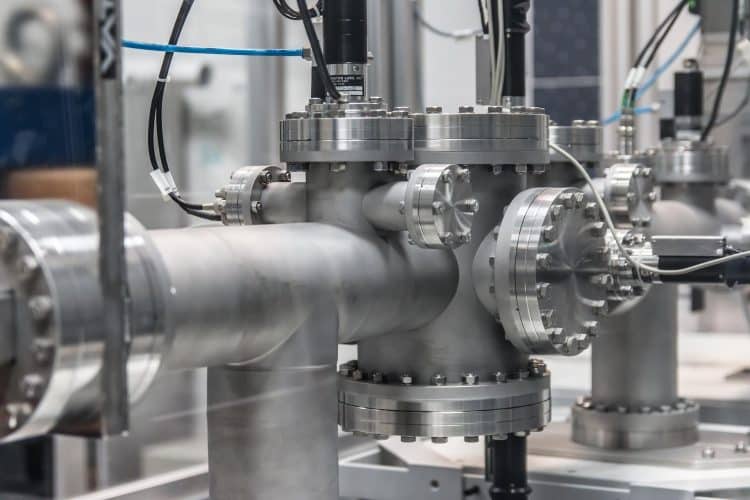Ultra high-pressure processing (UHP), or high pressure processing (HPP), applies pressurized hydraulic fluid (hydrostatic pressure) to packaged liquid/solid foods to destroy microbes without the quality degradation associated with heat. Also known as Pascalization, the process was first used to purify food in the late 19th century. [1] Today, UHP/HPP is used for products ranging from fruit juice to guacamole, conferring the added benefit of inactivating enzymes that shorten shelf life. [2] But can this method improve the safety, shelf life, and stability of cannabinoid products?
Scientific research on UHP/HPP for cannabis products is lacking. Nonetheless, the treatment has proven benefits in food processing that make it a hypothetical possibility for certain cannabis producers. Advantages related to food/beverages include [3]:
- Uniform pressure does not change the shape of the product.
- Products are packaged and sealed prior to treatment, averting subsequent contamination.
- The process mostly preserves the product’s physical and chemical properties, including organoleptic qualities, antioxidants, phenols, and pigments.
- High pressure disrupts the cellular physiology of harmful microbes (notably coli, Lesteria, and Salmonella) and inactivates their enzyme systems.
- HPP extends shelf life (two-fold or more) and improves safety.
- Consumers are receptive to HPP, and it can be pivoted into a marketing opportunity (e.g., free of chemical preservatives). [3]
Hydrostatic pressure is applied in the range of 100 to 1,000 megapascals (MPa). [3] Sterilization is likely ineffective for products with very low moisture/water content (e.g., spices), and the pressure may crush products with air pockets (e.g., bread). [3] The product must be packaged in flexible, leak-proof plastic and is often vacuumed. [4] The pressure vessel contains water or another aqueous solution that is pressurized isostatically (instant and uniform) with a pump or piston. [5] Commercial applications most commonly utilize pressures between 400-600 MPa. [5] A processing temperature between 0-100 °C may be specified. [3] The treatment is generally complete in 3-5 minutes.
HPP also causes a uniform increase in product temperature via compression heating. [5] Abera [3] approximated the compression heating rate at 3°C per 100 MPa. However, Campus [5] explained that the rate was dependent on “food composition, pressurization rate (pressure ramp employed) and the geometry of the processing equipment.” The intersection of pressure, compression heat, and cannabis decarboxylation in this method is unknown.
The primary limitation of UHP is that certain microbial spores may survive high pressure treatment in their indestructible dormant states, especially in environments of low acidity where they cannot germinate. [6] Increasing the processing temperature above ambient conditions may help deactivate the spores of Bacillus and Clostridium, two of the most impactful originators of food-borne illness. [6] Pressure-assisted thermal sterilization combines HPP with more significant heat (90-120°C) to treat low-acid products. Oscillating low, medium, and high pressures to activate dormant spores and subsequently destroy the more vulnerable germinating spores is another potential strategy. [6]
Several companies offer equipment in conventional food processing using this method. Cannabis producers — especially those developing edible and beverage infusions — may utilize UHP for sterilization and shelf life. But they would be wise to first determine any unknown effects on cannabinoid and terpene composition.
References
- Jay JM, et al. “Chapter 19: Other Food Protection Methods.” Modern Food Microbiology, 7th edition, Springer, 2005.
- San Martín MF, et al. “Food Processing by High Hydrostatic Pressure.” Critical Reviews in Food Science and Nutrition, 42, no.6, 2002. Times Cited = 310 (CrossRef); Journal Impact Factor = 6.704
- Abera G. “Review on High-Pressure Processing of Foods.” Cogent Food & Agriculture, vol.5, 2019. Times Cited = 2 (CrossRef); Journal Impact Factor = N/A
- Prakasam M, Largeteau A. “Flexible Packaging for Nonthermal Decontamination by High Hydrostatic Pressure.” Food Packaging, edited by Grumezescu AM, Academic Press, 2017, pp. 365-390.
- Kadam PS, et al. “Review on the High Pressure Technology (HPT) for Food Preservation.” Journal of Food Processing & Technology, vol.3, no.1, 2012. Times Cited = 54 (GoogleScholar); Journal Impact Factor = 2.53
- Black EP, et al. “Response of Spores to High-Pressure Processing.” Comprehensive Food Science and Food Safety, vol.6, no.4, 2007, pp. 103-119. Times Cited = 131 (ResearchGate); Journal Impact Factor = 8.738











